Madoryx pseudothyreus floridensis
Melichar and Rezac [2014]
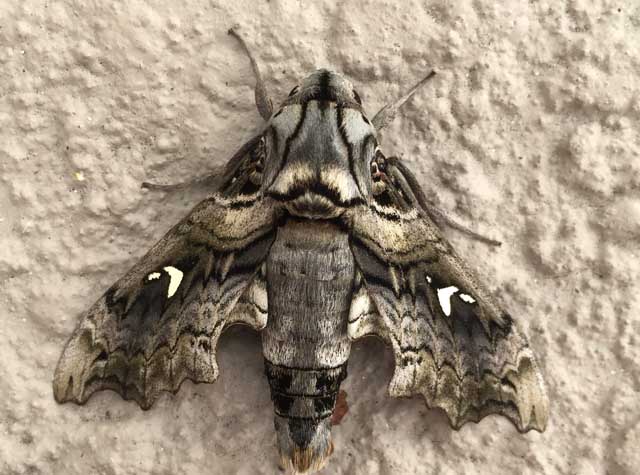
Madoryx pseudothyreus, Marco Island, Collier County, Florida,
March 7, 2016, courtesy of David Wright.
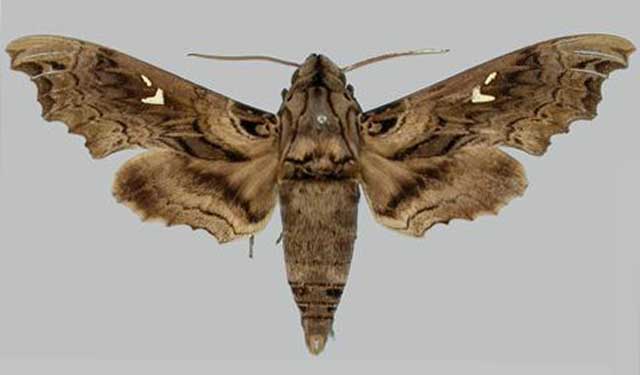
Madoryx pseudothyreus floridensis male, San Marco, Florida,
as per Creative Commons license, via Sphingidae Museum, Pribram.
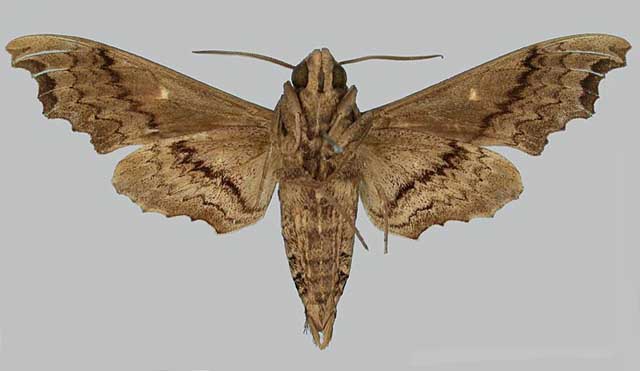
Madoryx pseudothyreus floridensis male (verso), San Marco, Florida,
as per Creative Commons license, via Natural History Museum, London.
This site has been created by Bill Oehlke.
Comments, suggestions and/or additional information are welcomed by Bill.
TAXONOMY:
Family: Sphingidae, Latreille, 1802
Subfamily: Macroglossinae, Harris, 1839
Tribe: Dilophonotini, Burmeister, 1878
Genus: Madoryx Boisduval, [1875] ...........
Species: pseudothyreus Grote, 1865
Subspecies: floridensis Melichar and Rezac [2014] |
DISTRIBUTION:
The Floridean False-windowed Sphinx, Madoryx pseudothyreus floridensis
(Wing span: 2 5/8 - 2 3/4 inches (6.6 - 7 cm)), flies in southern Florida: HT San Marco.
The wing margins are scalloped. The upperside of the forewing is brown with dark brown and tan markings.
The forewing has a V-shaped white spot near the center of the costa.
This moth, Madoryx pseudothyreus floridensis, was prevsiously included with Madoryx pseudothyreus pseudothyreus whose holotype
is from Cuba. Specimens from the Bahamas, which were also included with nominate pseudothyreus are now, as of 2014, classified as
Madoryx pseudothyreus bahamensis.
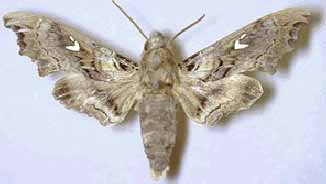
Madoryx pseudothyreus floridensis southern Florida,
courtesy of Paul Opler.
FLIGHT TIMES:
There are probably several flights throughout the year in southern Florida.
ECLOSION:
Moths emerge from pupae in thin-walled cocoons under leaf litter.
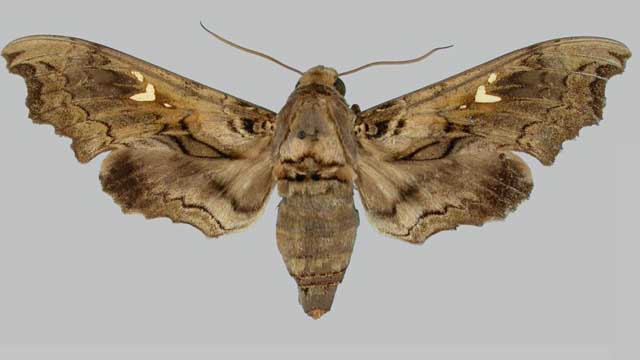
Madoryx pseudothyreus floridensis female Chokoloskee, Collier County, Florida,
as per Creative Commons license, via Natural History Museum, London.
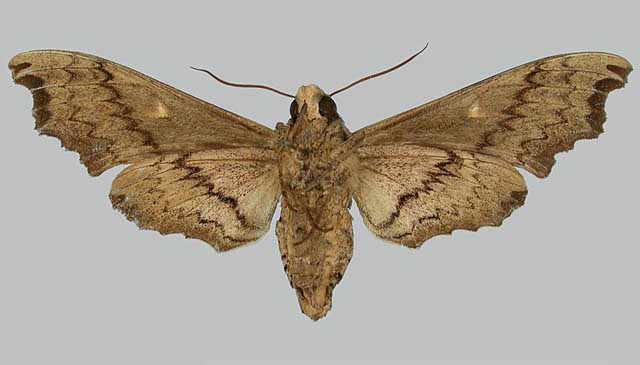
Madoryx pseudothyreus floridensis female (verso) Chokoloskee, Collier County, Florida,
as per Creative Commons license, via Natural History Museum, London.
SCENTING AND MATING:
Females call in the males with a pheromone released from a gland at the tip of
the abdomen. Adults nectar at flowers, including petunia and Asystasia gangetica at dusk.
EGGS, LARVAE, PUPAE:
Females probably lay eggs on evening primrose (Onagraceae). In Florida larvae have been found on
Black Mangrove (Avicennia germinans).
Larvae pupate in cocoons spun amongst leaf litter, but often spin cocoons affixed to branches well above ground level.
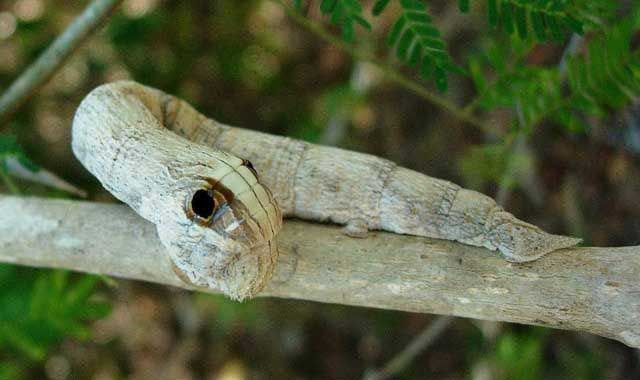
Madoryx pseudothyreus subspecies fifth instar, on black mangorve,
courtesy of Bart Coppens.
The larva depicted immediately above is from an unknown location, and would be classified as Madoryx pseudothyreus bahamensis if from the Bahamas,
Madoryx pseudothyreus floridensis if from Florida; and Madoryx pseudothyreus pseudothyreus if from Cuba.
True Madoryx pseudothyreus floridensis is depicted below. I do not known if the abdominal leg patterning and body colouration are variable.
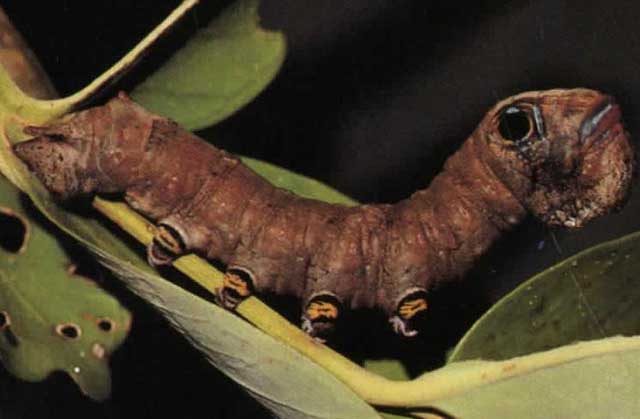
Madoryx pseudothyreus floridensis fifth instar on balck mangrove,
Florida, courtesy of Mark Minno.
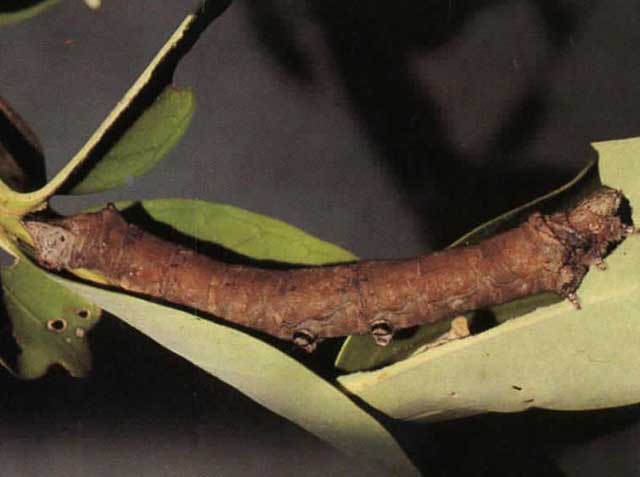
Madoryx pseudothyreus floridensis fifth instar on balck mangrove,
Florida, courtesy of Mark Minno.
Return to U. S. A. Table
Return to Sphingidae Index
Return to Dilophonotini Tribe








